I live on a small farm near Portland, Oregon. I love the cycle of life in the country: planting the garden, shearing the sheep, tending, and harvesting, and “putting by.” Having used natural plant dyes nearly all my adult life, I eliminated all other colorants from my personal work when my family moved to our farm about twelve years ago. Now the residue from our garden harvest may go to dyepot, chicken feed, or compost, but it all ends up back in the garden to begin the cycle again!
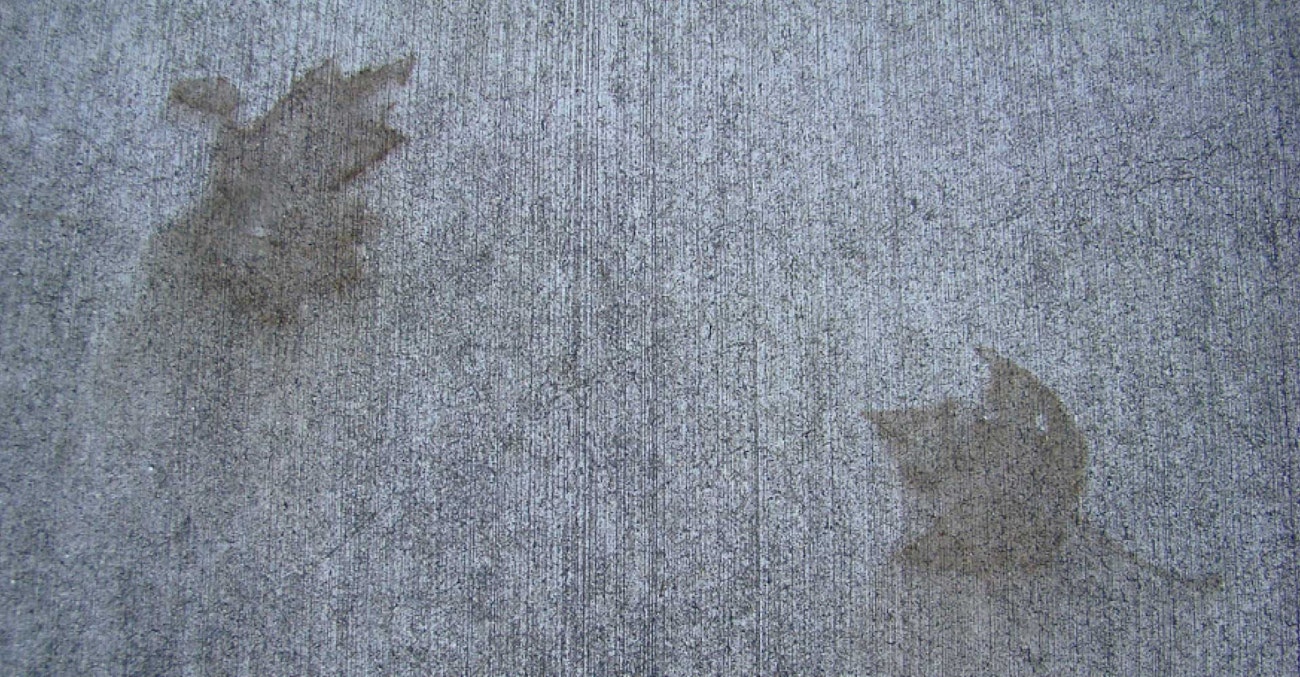
Impressions of maple leaves on a wet Portland sidewalk. Photos credit: Judilee Fitzhugh unless otherwise noted
When autumn arrives in our part of Oregon, it brings a few beautiful clear days with tremendous views of Mt. Hood, the distinctive aroma of hazelnuts roasting, and our famous brewfests . . . but mostly, it brings back the “Portland mist,” as we affectionately call our fall rains. Portland receives 55 percent of our annual 40 inches of precipitation between November and February each year. When I walk downtown in the fall, I notice artistic images on the wet sidewalk where fallen leaves have left temporary impressions.
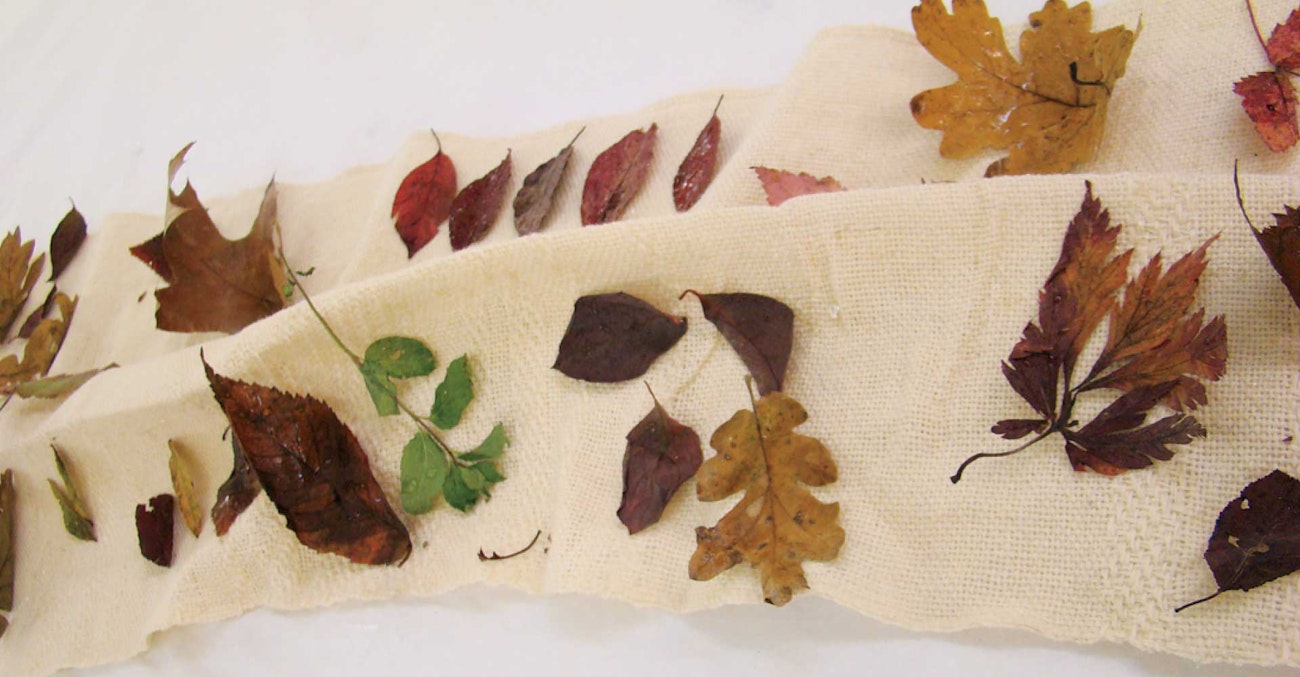
Laying the plant material out on the woven shawl.
For years, I snapped photos of these images and wondered how I could interpret them on cloth. Then, a couple of summers ago, a wonderful workshop with India Flint allowed me to accomplish my leaf-inspired surface designs without compromising my lifestyle choices. I’ve experimented a great deal with India’s method of rolling plant material in cloth and boiling the plant-cloth package. Contained within the individual leaves are natural pigments that will readily transfer to cloth or paper under heat and pressure. These anthocyanin carotenoids (water-soluble pigments) are found to varying degrees in most plant material including leaves, stems, roots, flowers, and fruits.
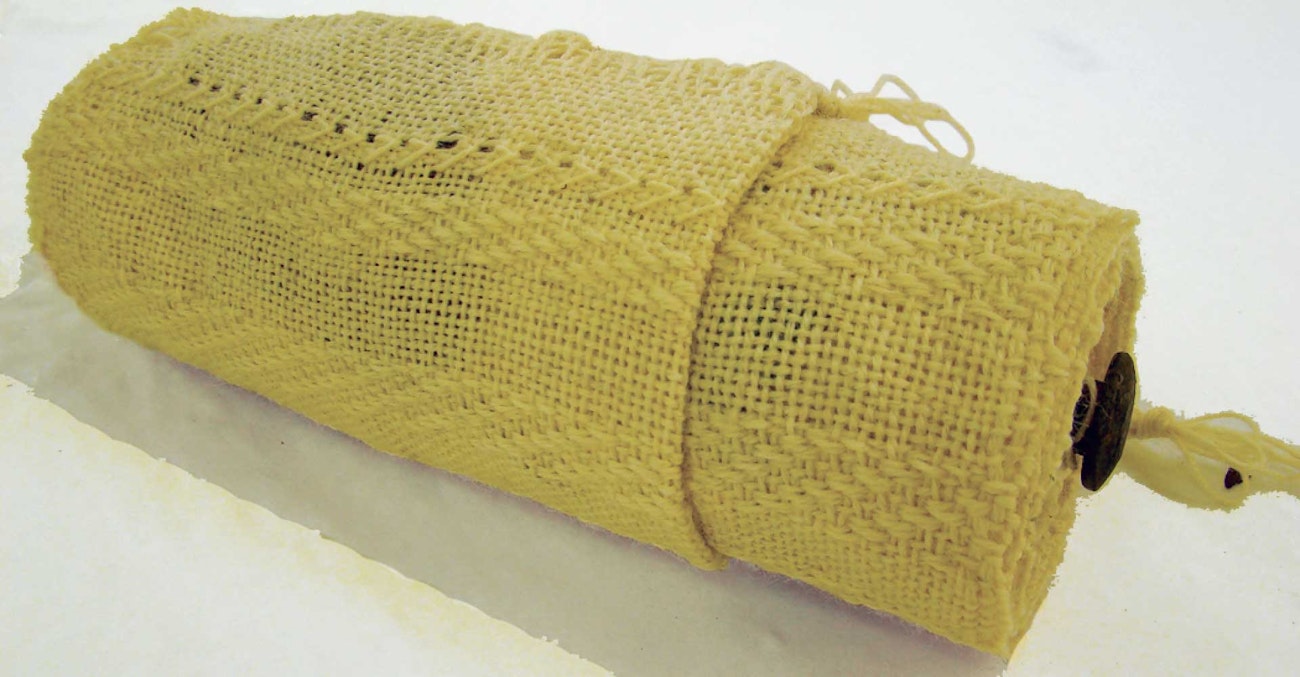
The shawl/leaf bundle folded and wrapped around a 12-inch nail.
I usually combine local native plants and traditional Japanese shibori techniques to produce cloth and paper products. The basic idea is to place plant material in direct contact with the fabric, then apply heat and pressure to transfer the plant pigments. I first learned to roll the fabric with a variety of collected leaves onto a round stick, tie it tightly with strong twine, and boil the package for an hour. You can vary results by rolling the fabric on different materials that change the chemistry of the bundle, by using a shibori fold-and-clamp technique instead of rolling, by boiling in plain water or in another dyepot, by enclosing found objects in the fiber bundle, or by varying the length of time the fabric is in the pot. We have a nice stand of native oak trees in one pasture and my favorite Pacific madrone (Arbutus menziesii) in the front yard; the leaves from both are wonderful as pot dyes and as contact prints, my term for the image transfer. No mordant is necessary for this process, but I often intensify the prints by using a rusty metallic object, as I have done with the shawl shown here by rolling it onto a large nail. Rolling fabric onto a stick produces a fabric on which the images of the leaves are intermingled to resemble the forest floor (or leaves on a wet sidewalk!).
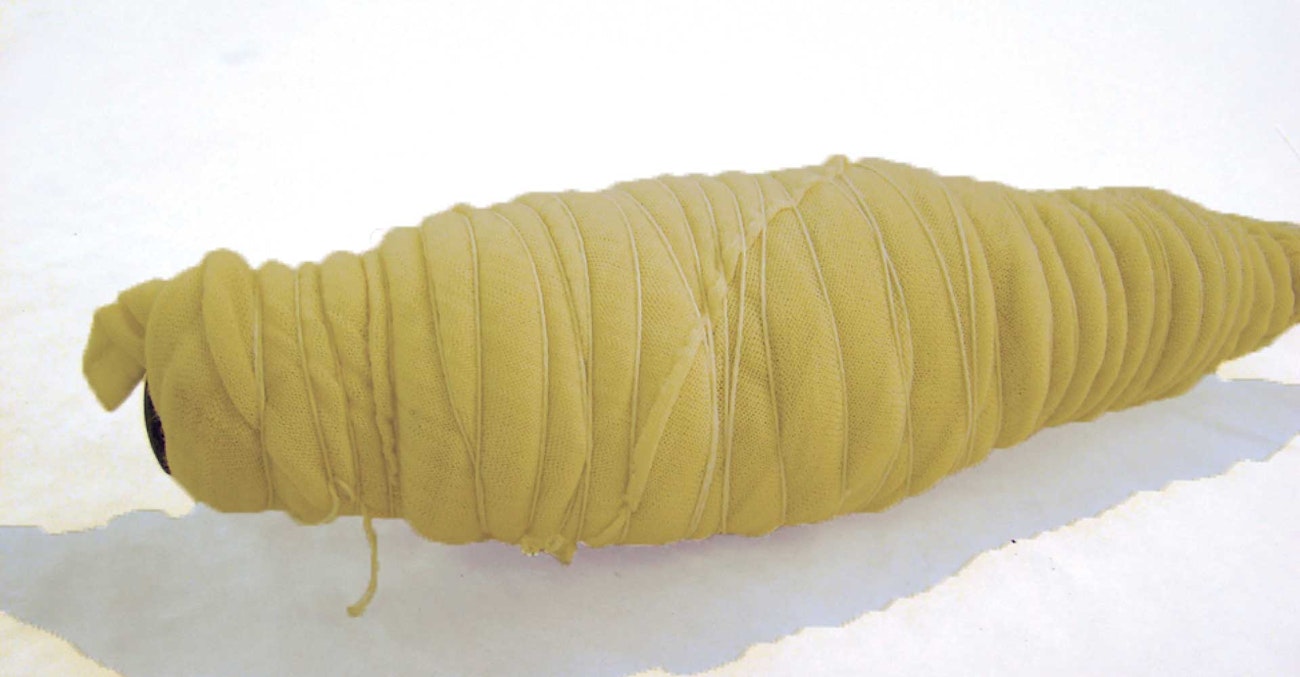
Encased in a “waste” cloth and tied up with cotton warp thread.
As with most natural-dye processes, this method works best on protein fibers (silk and wool). For this article, I wove a wool shawl from my stash of Robin & Russ Handweavers yarn. It’s a medium-weight, soft but sturdy wool at 22 wraps per inch and 2,100 yards per pound. I sleyed a 3-yard length of 214 ends at 12 ends per inch because I knew this wool would full nicely with a soft washing. I also added a pair of threads at each selvedge for more stability in the finished cloth. I began with a hemstitched edge, then alternated plain weave and twill for a border (4 rows plain weave, 1 twill repeat, 10 rows plain weave, 2 twill repeats, 10 rows plain weave, 1 twill repeat; this order is reversed at the far end of the weaving). I realized that the twill would probably obscure most of the detail of the leaf prints; I wanted large plain-weave areas to showcase the leaf impressions, but I didn’t want a plain-weave shawl, so I picked up the twill pattern along the right-hand side of the warp and only wove plain weave on the left-hand side. This gave me the advantage of large open spaces for the contact prints and held my interest with the random twill pick-up design. It also gave me a better fit in the finished textile: the twill takes up a bit differently in the final wash and creates a little structural shaping around the shoulders.
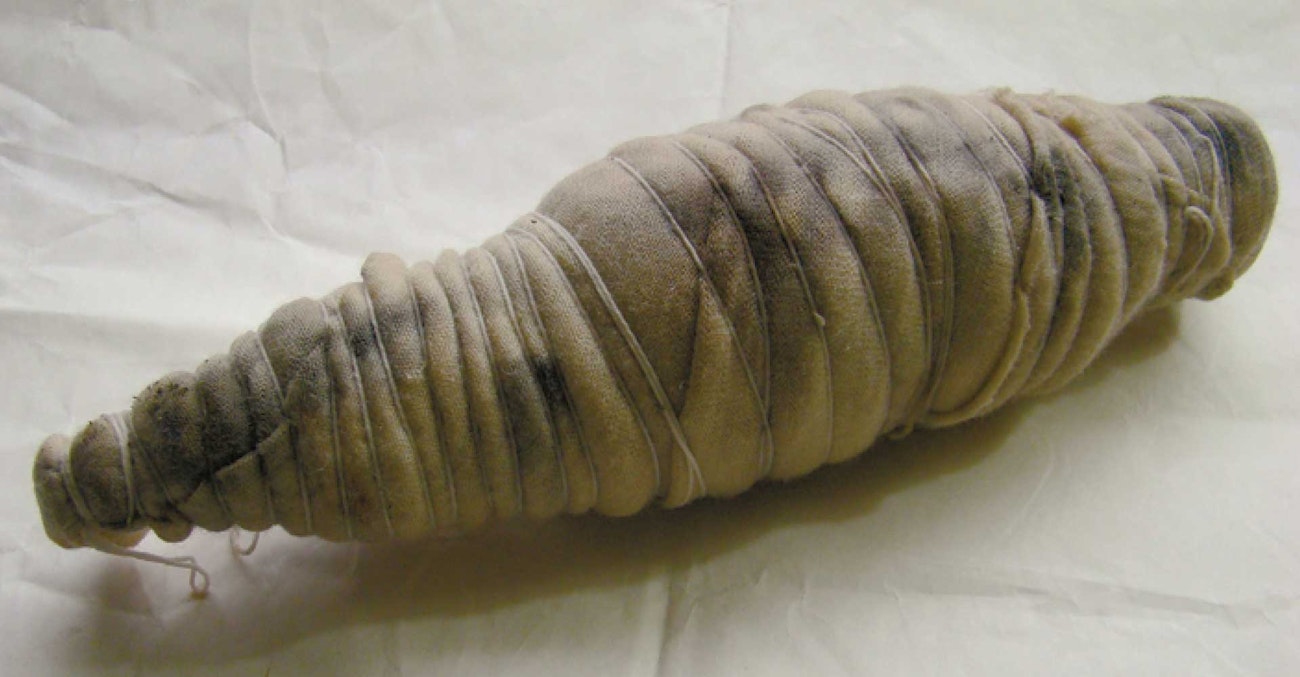
Fresh from the pot.
To produce the surface design on the finished cloth, I collected leaves from the farm: oak, cherry, maple, blackberry, and plum. I laid the fabric out flat on a big table and distributed the leaves in a pleasing pattern. Then I folded the fabric onto itself so that it would fit the length of the metal nail I wanted to use as a base. (My weaving was 17” wide, but my nail is only 12” long.) Tightly rolling the fabric around the slender nail was a challenge. In order to compress the roll further and protect the handwoven edges in the dyepot, I wrapped a wool knitted “waste” cloth around the handwoven roll and tied it fast with a thrum of undyed carpet warp.
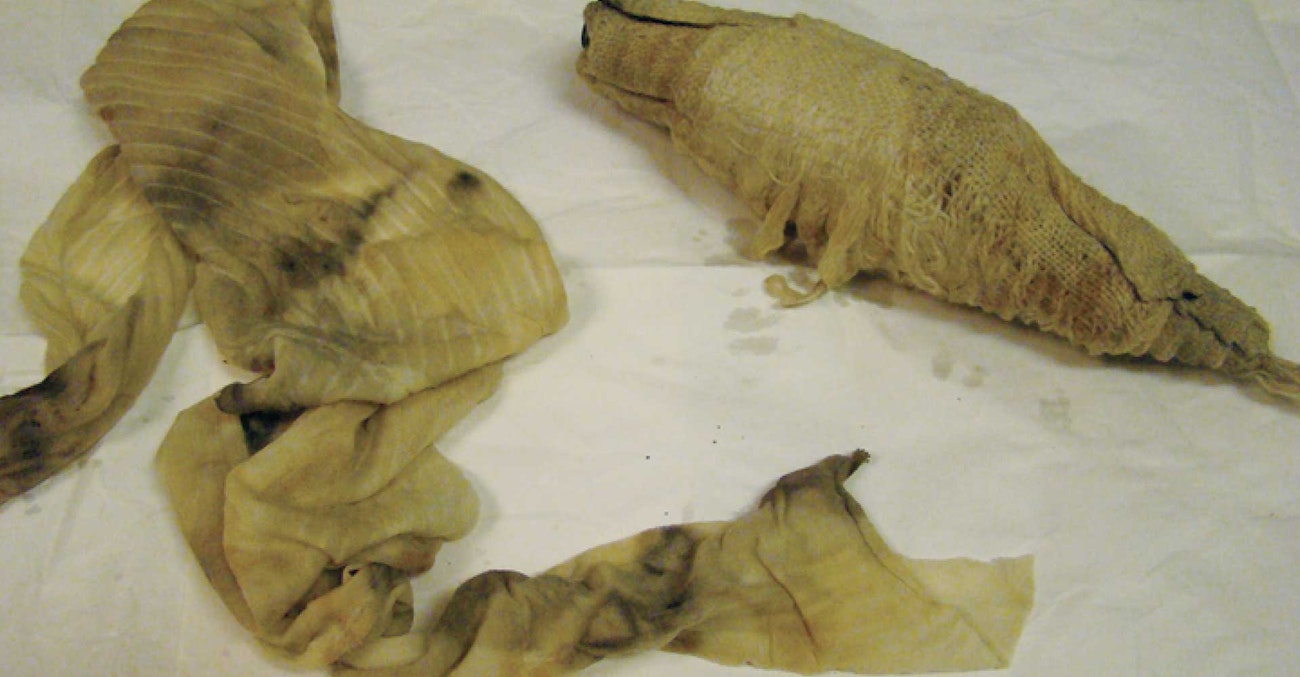
The shawl bundle removed from the outer layer, a wool knitted “waste” cloth.
The entire bundle went into a big pot of hot water; I let it come to a soft boil and then reduced the heat slightly. After simmering the contents for an hour, I turned the heat off, put a lid on the pot, and let it sit overnight. The next morning, I removed the fabric from the pot and squeezed out the excess water.
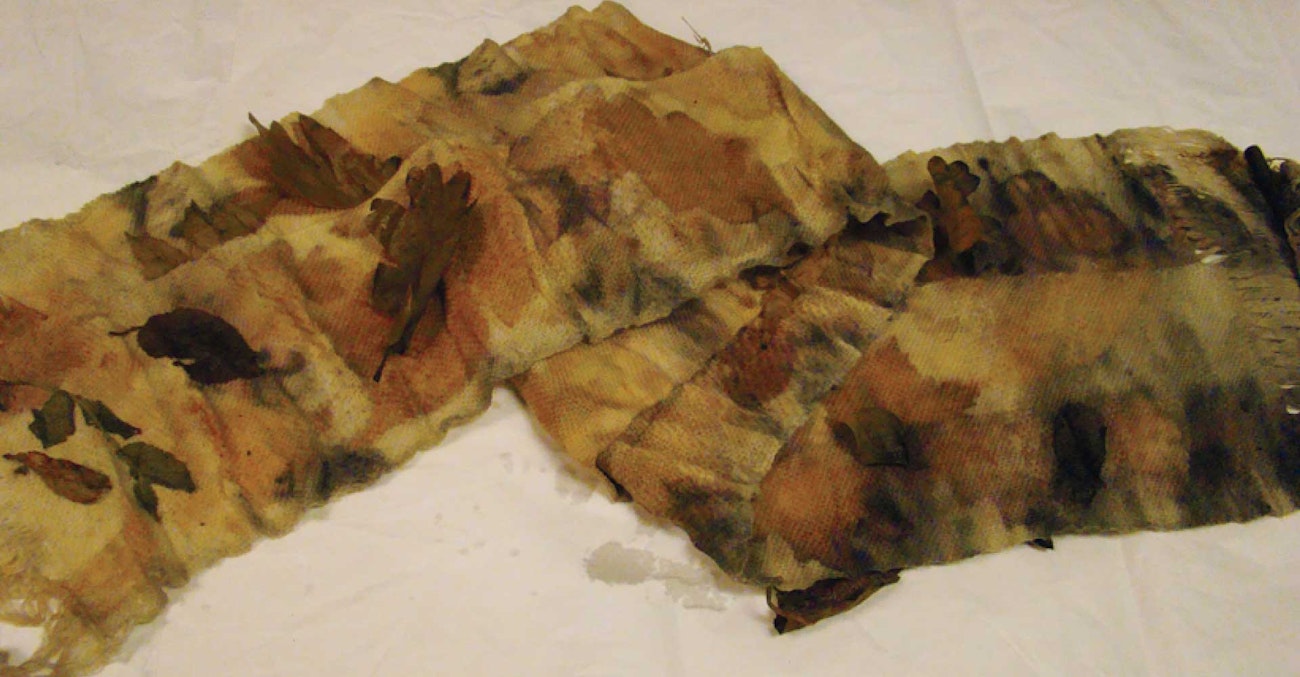
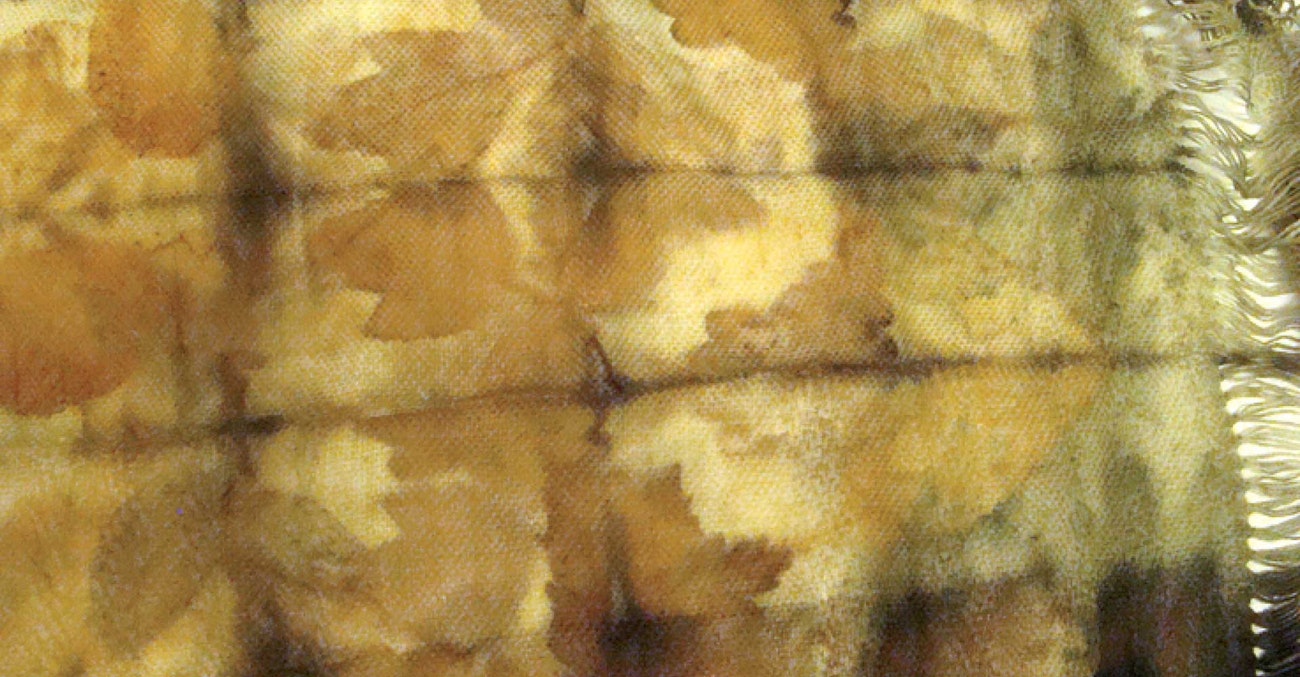
When unwrapped, the end of the shawl that was nearest the iron nail is darker than the other end, but the details of the leaf impressions are evident throughout the cloth.
Opening the fabric bundle is like opening an unexpected gift: the print from each leaf varies depending on its genus, the proximity to the metal nail, and whether it was the front or the back of the leaf that was in contact with the cloth. I am constantly amazed at the amount of detail the leaves will transfer: veins, color shifts, ragged edges all make the transition. It’s the perfect memento of autumn.

